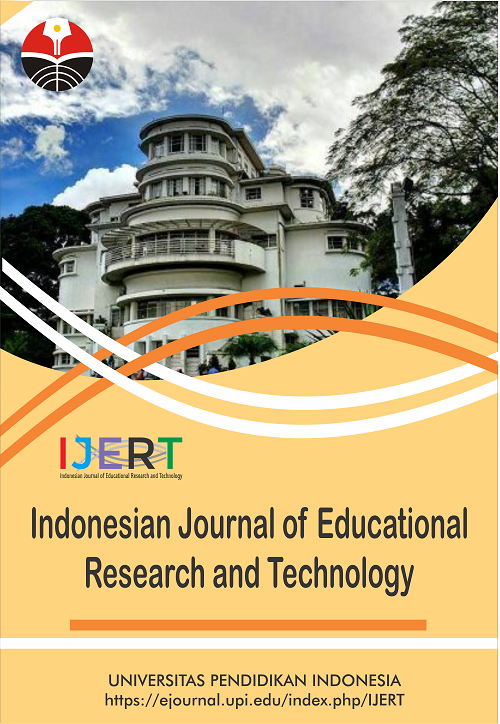Think-Talk-Write Strategy to Improve the Ability to Compose Indonesian Sentence Structure in SLBN Cicendo Bandung, Indonesia
Abstract
Keywords
Full Text:
PDFReferences
Auliasari, V., Supriyadi, S., and Linuwih, S. (2019). Learning strategy of think talk write based inquiry approach toward the scientific communication ability of students. Physics Communication, 3(2), 60-71
Aziz, M., and Maaliah, E. (2017). The application of think-talk-write strategy to improve the students’writing skill: A classroom action research. Inovish Journal, 2(2), 24-34.
Ellis, N. C., and Larsen-Freeman, D. (2006). Language emergence: Implications for applied linguistics—Introduction to the special issue. Applied linguistics, 27(4), 558-589.
Heidorn, G. E., Jensen, K., Miller, L. A., Byrd, R. J., and Chodorow, M. S. (1982). The epistle text-critiquing system. IBM Systems Journal, 21(3), 305-326.
Lederberg, A. R., and Everhart, V. S. (2000). Conversations between deaf children and their hearing mothers: Pragmatic and dialogic characteristics. Journal of Deaf Studies and Deaf Education, 5(4), 303-322.
Levine, D., Strother-Garcia, K., Golinkoff, R. M., and Hirsh-Pasek, K. (2016). Language development in the first year of life: What deaf children might be missing before cochlear implantation. Otology and Neurotology, 37(2), e56-e62
Pask, G. (1976). Styles and strategies of learning. British Journal of Educational Psychology, 46(2), 128-148.).
Rahmah, L. S. (2017). Improving students’ score in writing descriptive text through Think Talk Write Strategy. International Journal of English and Education, 6(4), 180-193.
Sarem, SN, and Shirzadi, Y. (2014). A critical review of the interactionist approach to second language acquisition. Journal of Applied Linguistics and Language Research, 1(1), 62-74.).
Skjeggestad, E., Gerwing, J., and Gulbrandsen, P. (2017). Language barriers and professional identity: A qualitative interview study of newly employed international medical doctors and Norwegian colleagues. Patient Education and Counseling, 100(8), 1466-1472.
Wolbers, K. A. (2008). Using balanced and interactive writing instruction to improve the higher order and lower order writing skills of deaf students. Journal of Deaf Studies and Deaf Education, 13(2), 257-277.
DOI: https://doi.org/10.17509/ijert.v1i3.39585
Refbacks
- There are currently no refbacks.
Copyright (c) 1970 Universitas Pendidikan Indonesia

This work is licensed under a Creative Commons Attribution-ShareAlike 4.0 International License.







.png)




